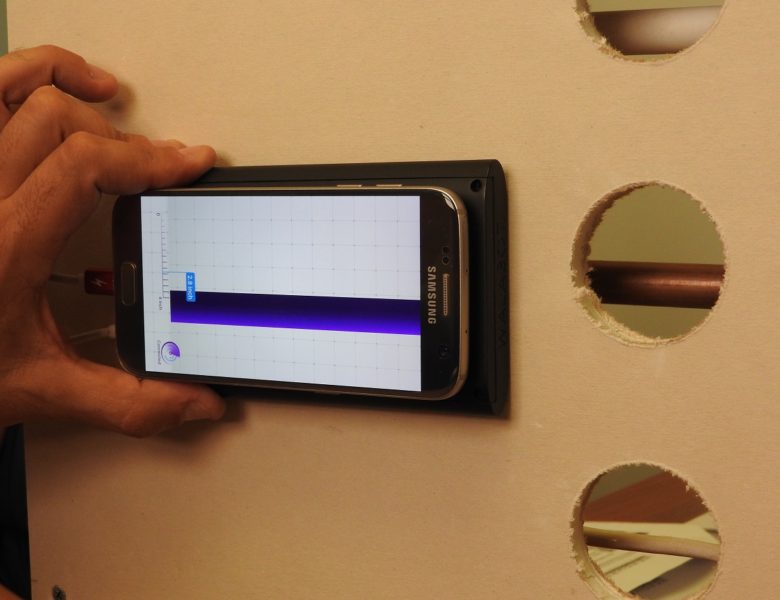
Android smartphones can now become your go-to household tool, thanks to the new sensor WalabotDIY, which connects to a phone and allows users to observe what’s in cement or drywall through at least four inches. Replacing the traditional stud sensor, the WalabotDIY works with the Android to present pipes, wiring, and even insects that may be behind a home’s walls.
The product employs Vayyar Imaging’s 3D sensor technology, which enables any cell phone or tablet to become a full 3D-imaging system. Using sensors that are based on low-power radio transmissions, Vayyar’s involvement in WalabotDIY is the first time the technology is available in a consumer-friendly product. “The idea is to take the guesswork out of remodeling,” said Vayyar CEO Raviv Melamed about WalabotDIY. “You don’t want someone punching a hole in your sewer pipes by accident. It’s like real Superman vision.”
A user can simply download WalabotDIY from the Google Play store, connect the app’s accessory to an Android’s USB port, and hold it against the wall in question. Easier usage is also possible by magnetically attaching the WalabotDIY to the back of the phone, freeing up a hand to operate the app equivalent. The program also removes imprecision from the home evaluation process, presenting a visual representation of a wall’s state rather than a stud sensor’s unspecific LED marks. “We can get it to five millimeters accuracy,” said Melamed. “You’ll know what’s inside a wall in a few minutes.”
Vayyar’s role of strength also can’t be questioned — it has previously been used in breast cancer screenings and food safety monitoring, offering cheaper alternatives for detection. “The goal was to have a low-cost imaging device that every person can use, instead of just experts and people who understand complex technology,” Melamed said. By working with Vayyar, WalabotDIY also has the capability to detect breathing patterns, suggesting a possibility of analyzing sleep patterns and other health concerns.
The WalabotDIY extension device is currently priced at $199, offering multiple sensing modes of raw data and pipe and easy photo-taking for offline analysis. Despite the high price tag, reviewers seem to find the expense worth it. “It’s not as cheap as a basic stud sensor, but think of it as added insurance that a DIY project will be completed on time,” wrote Gizmodo contributing editor Andrew Liszewski.
Walabot is also currently accepting technical feedback through its website about how to improve its system even more. It also offers a programmable Walabot Maker for $299 and a Pro version for $599. While the discussion for new additions is open-ended, the WalabotDIY sensor is well on its way to becoming a helpful tool in home renovation.
Source: Gizmodo, TechCrunch, BestTheNews, Venture Beat, Vayyar, Walabot
Advertisement
Learn more about Electronic Products Magazine





